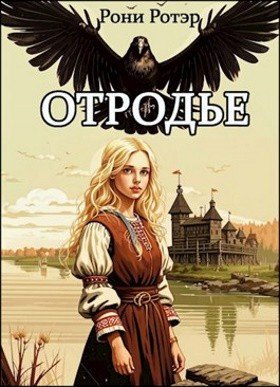Rentschler’s and Elsaesser’s models also prove helpful when mapping some of the striking transformations of German cinema since the second half of the 1980s. Recent German cinema, in particular that of the postunification period, has developed into a self-confident genre cinema. It no longer shows exasperated subjects toying with the American imaginary, nor does it engage its viewers in Oedipal revolts against the specters of cultural imperialism, Nazi or Hollywood style. Surely, Hollywood continues to dominate the German market in almost all respects. Domestic feature productions earned as little as 9.5 percent of all German box office returns in 1998 and 14 percent in 1999.12 But encouraged by the emergence of new domestic venues of film production and distribution, on the one hand, and by the increasing public historicization of the Nazi past, on the other, German cinema today has clearly broken away from the American dilemmas of earlier Autorenfilme, as well as from their hopes to rebuild the national through disidentification with the popular. The successful German comedies of the first half of the 1990s ( Abgeschminkt [1993], Der bewegte Mann
[1994], Keiner liebt mich [1995], Männerpension [1996]), in spite of the fact that their humor did not fare very well at all with American audiences, did by no means hesitate to imitate mainstream Hollywood models. Unlike many representatives of the previous generation of Autorenfilmer, younger
09-C2205 8/17/02 3:39 PM Page 267
Epilogue
/
267
directors such as Doris Dörrie, Katja von Garnier, and Sönke Wortmann are clearly guided by Hollywood paradigms of industrial filmmaking. As Gerd Gemünden argues: “With their fast editing, stylized interiors, witty dialogues, well-paced plot development, and a strong emphasis on entertainment rather than consciousness raising, these German comedies do indeed come very close to the Hollywood cinema they seek to emulate. Their surprising and enormous success with German audiences confirms that they speak a film language with which German viewers are very familiar.”13
In the second half of the 1990s Hollywood formulas have also increasingly inspired the production of epic German melodramas that convert German twentieth-century history, including that of the Nazi period, into flamboyant spectacles of sight and sound. Films such as Joseph Vilsmaier’s Comedian Harmonists (1997), Max Färberböck’s Aimée und Jaguar (1998), Rolf Schübel’s Gloomy Sunday (1999), Vilsmaier’s Marlene (2000), and Xavier Koller’s Gripsholm (2000) freely borrow from Hollywood conventions in order to appeal to post-Wall desires for historical memory. On the one hand, these films can be seen as part of the new European “heritage”
cinema, a cinema of high production values and popular appeal that supplements, rather than really challenges, the role of Hollywood productions on the global market.14 Devoid of the stylistic marks of European art authorship, heritage films represent issues of national history and myth with the help of classical narrative devices. As they explore residual pockets of exportability, these film productions indicate the extent to which globalized film culture at once homogenizes modes of expressions and effects new local structures of meaning and difference. On the other hand, the return of historical melodramas in the late 1990s clearly also participated in postunification efforts to reorder German history and recuperate a sense of national normalcy.15 As if trying to pass redemptive justice to those who gave their life to German history, these melodramas recuperate blocked national alternatives and extend revisionist images of Jewish-German symbiosis.
Aimée und Jaguar, which tells the story of a Jewish-German lesbian couple during the last years of the war, not only pictures Nazi society as ruptured by fundamental inconsistencies between nationalist ideology and cosmopolitan everyday practice, but it also exploits these discrepancies in order to teach Germans a putatively Jewish lesson about how to overcome historical brooding and how to live life to the fullest. Vilsmaier’s Comedian Harmonists, on the other hand, by following the path of the famous group of German a cappella singers from the late Weimar era into the Nazi period, suggests that, had it not been for the group’s three Jewish members and the Nazis’ anti-Semitism, twentieth-century Germany could have enjoyed
09-C2205 8/17/02 3:39 PM Page 268
268
/
Epilogue
powerful national and popular alternatives to American mass culture. The narrative of Hollywood in Berlin thus enters a stage in which German cinema reinvents the past as heritage so as to capitalize on present-day desires for undisturbed national identifications.
“ a d e s c a r g a r l a c a r r e ta ” ?
Miramax Films marketed the American release of Vilsmaier’s Comedian Harmonists in March 1999 with the catchphrase, “A true story that proves the voice is mightier than the sword.” As much as it aspires to rewrite the German past, the film, indeed, returns to the familiar tradition of defining linguistic and musical properties as the central components of German national identity. Like almost all films discussed in this book, Comedian Harmonists is concerned with reassessing—and modernizing—the role of romantic traditions in the age of industrial mass culture. In the film’s most intriguing sequences we witness the singers’ efforts to make the most complex vocal arrangements sound natural and to integrate a multiplicity of voices into one higher unity. What is process must become product, and what relies on a Taylorist division of vocal labor must give the impression of organic harmony so that both national and popular success might ensue.
Similar to the films discussed in part 1, Vilsmaier’s melodrama renders the mellifluous texture of the German language as a trigger of overwhelming experiences of collectivity. The a cappella group’s synchronized voices signify nothing less than the national community, a mythic voice silenced by the sword of Nazi politics yet powerful enough to reconstitute itself in the 1990s.16
Vilsmaier’s reinscription of the German language as the principal conduit to national identity did not emerge in a vacuum. Instead, it cast the nationalist murmur of many German intellectuals after unification, their desire for self-confident expressions of national belonging, into a popular idiom.17
In his 1991 lecture “Talking about Germany” filmmaker Wim Wenders helped inaugurate this renewed quest for a grounding of German identity in the fabric of the German language. Exasperated about the way Hollywood images flood the German market, Wenders returned to Genesis 1:1—the mythic creation of being through language—to overturn the intermingling of cultural codes in the present: “[O]ur balm in this land of lost souls, is our German language. It is differentiated, precise, subtle, endear-ing, accurate, and nurturing at the same time. It is a rich language. It is the only wealth that we have in a country that believes itself to be rich when it is not. The German language is everything that our country no longer is,
09-C2205 8/17/02 3:39 PM Page 269
Epilogue
/
269
what it is not yet, and what it may never be.”18 Wenders asks us to abandon the world of images in order to reclaim the word as a mythic predicate of national identity. Once thoroughly enthralled by the power of (American) sights to supersede the tainted legacies of German culture, he now endorses Kafka and Goethe as panaceas for the lack of integrative myths. Images can no longer produce identity in Germany, he claims. Authentic nationhood can only reemerge from the sonic spaces of language and storytelling.
In his earlier work Wenders used sound to great effect in order to interrupt voyeuristic modes of identification and to pit American popular culture against the authoritarian legacies of German history. Sound, in Wenders’s work of the 1970s, created tensions between the diegetic and the nondiegetic and decentered the viewer’s perception and pleasure. Wenders’s films could thus be described as forays into cinematic polyphony and unsettled synesthesia. They explored the power of images to provide rhythm as much as the power of sound to stimulate the viewer’s visual imagination.
Wenders’s 1991 project of linguistic self-assertion signaled a retreat from his previous exploration of sound as a means to emphasize the ambiguity and contingency of meaning. The sounds of the German language were now meant to fold the subject back into the mythic texture of the nation.
Their task was to transpose history into Heilsgeschichte and bestow bliss to the ruptured scenes of German culture. By suggesting that a German intellectual’s talk about Germany is a quintessential sign of Germanness, Wenders’s utopia of sonic nationhood secretly aspired to the status of a self-fulfilling prophecy. The romantic vision of language as nation undercut alternative attempts to renegotiate the meaning of German identity in terms of Germany’s unmasterable past as much as its many democratic, counter-hegemonic traditions.
It seems appropriate to conclude a book that followed the tracks of supplanted legacies and of selves identifying with imaginary others with yet another case of slippage and displacement. Whereas Vilsmaier’s Comedian Harmonists converted Wenders’s elitist vision of 1991 into a popular box office hit,19 Wenders’s cinema itself increasingly abandoned the project of sonic regrounding and national normalization. Surely, Wenders’s sound tracks of the 1990s came to play an increasingly important role in the filmmaker’s attempt to keep a check on the global proliferation of electronic images. Wenders’s sounds are meant to slow down or countervail the ways in which digital reproduction reconfigures our eyes and decenters our identities.20 But Wenders’s work of the postunification period, unlike that of Vilsmaier, has been by and large not very determined to collect specifically German sounds and synchronize them into spectacles of national belonging.
09-C2205 8/17/02 3:39 PM Page 270
270
/
Epilogue
Wenders’s 1994 Lisbon Story, for instance, had a disillusioned sound engineer travel to Portugal to meet his film director. Recording all kinds of vernacular noises on the streets of the Portuguese capital, the German sound technician compiles a semiethnographic bricolage of Lisbon sounds to which the director in the end is meant to add appropriate images. In his more recent Buena Vista Social Club (1998), on the other hand, Wenders reconstructs and follows the paths of some forgotten Cuban musicians from a recording studio in Havana to concerts in Amsterdam and finally New York. Clandestinely, Wenders records the octo- and nonagenarians’ enthusiasm about Manhattan, that locus classicus of Wenders’s own Americanist fantasies. Rather than talking about Germany and increasing the gulf between self and other, Wenders’s cinema now seems to record and actively participate in the intermingling of diverse cultures, visions, and sounds.
One of the songs in Wim Wenders’s Buena Vista Social Club is called
“El Carretero,” a Cuban “blues” tune derived from Spanish traditions that are also very popular in West Africa:
Por el camino del sitio mío
Un carretero alegre pasó
Con sus canciones que es muy sentida
Y muy guajira alegre cantó
























